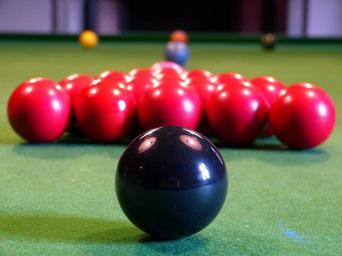Different to the case of independent probability.
Examples which involve dependent probability, look at when the probability of an event outcome is influenced by the outcome of another event.
Which are times when we can make use of a probability of dependent events formula.
If we flip a coin, each flip/event that is always independent of the previous flip.
The outcome of a new coin flip is NOT affected by the outcome of any previous flips that happened before.
We can look at an example where event outcomes are NOT independent from one another.
Dependent Probability Intro
Say we were to pick out 2 cards from a normal deck of 52 playing cards.We want to know the probability of pulling out a Spade card on the second pick.
Now there are 52 cards in a standard playing card deck.
From these cards, 13 of the cards are a Spade,
so 39 of the cards are not a Spade card.
Probability of a Spade in first pick: P( Spade 1st ) = \bf{\frac{13}{52}}
How is the Probability of a Spade on the 2nd pick affected?
After the first card has been picked, the probability of picking out a Spade card with the second pick will be affected by the outcome of the first pick.
– If the first card picked is a Spade,there is 1 less Spade card, and 51 cards remaining in the pack overall.
Then the probability of a Spade card on 2nd pick is:
P( Spade 2nd ) = \bf{\frac{12}{51}}
– If the first card is NOT a Spade card,
there is still 13 Spade cards, and 51 cards in the whole pack.
Then the probability of a Spade card on 2nd pick is:
P( Spade 2nd ) = \bf{\frac{13}{51}}
As can be observed with this example, the probability of picking out a Spade card on the 2nd pick is dependent on the previous outcome of the 1st card drawn.
Situations like this involve dependent probability.
Dependent Probability Notation
and Examples
Dependent Probability Notation,
Probability of Dependent Events Formula
If we have an event, let’s call this event G.
P( G ) = Probability of G
Now say there is a 2nd event, we can call this event H.
P( H ) = Probability of H
Here we introduce some added notation for dependent probability which is:
P( G | H ) = Probability of event H, given event G has already happened.
Notation which means that event G definitely has occurred, now what is the probability of event H occurring.
Thus if 2 events G and H are to happen, and probability of event H is dependent on the outcome of event S.
Then the sum for dependent probability is the following.
P( G ∩ H ) = P( G ) × P( G | H )
Example
(2.1)

10 Red balls , 10 Black balls , 20 White balls
Someone is going to pick 3 balls at random out of the rucksack.
What is the probability that they pick out 3 balls that are all Black?
Solution
Thinking in terms of a Black ball being picked each time, we have.
Probability of Black on first pick: P( 1st Black ) = \bf{\frac{10}{40}}
Probability of Black on second pick: P( 2nd Black ) = \bf{\frac{9}{39}}
Probability of Black on second pick: P( 3rd Black ) = \bf{\frac{8}{38}}
Now:
Probability of a Black ball on first and second pick:
P( 2 Black ) = P( 1st Black ) × P( 2nd Black | 1st Black ) = \bf{\frac{10}{40}} × \bf{\frac{9}{39}} = \bf{\frac{90}{1560}} = \bf{\frac{3}{52}}
Probability of Black on first, second and third pick:
P( 3 Blacks ) = P( 2 Blacks ) × P( 3rd Black | 2 Blacks ) = \bf{\frac{3}{52}} × \bf{\frac{8}{38}} = \bf{\frac{24}{1976}} = \bf{\frac{3}{247}}
The probability of someone picking out 3 Black balls in a row from the original 40 billiard balls in the rucksack is \bf{\frac{3}{247}}, which amounts to roughly 0.012 or 1.2%.
Not very likely to happen.
- Home ›
- Probability and Statistics › Dependent Events Probability